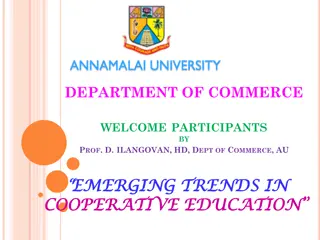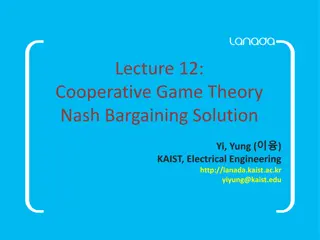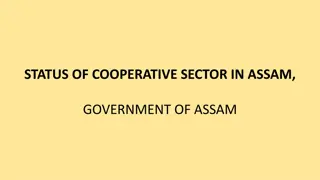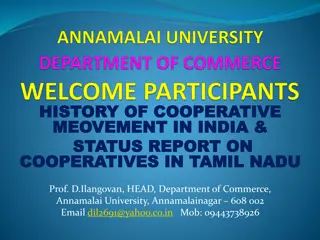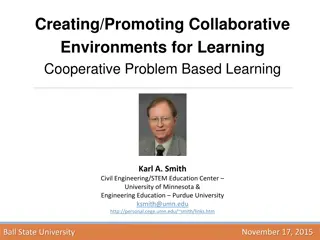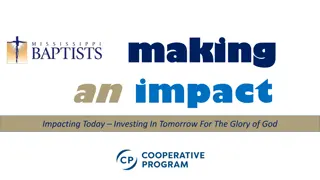National Science Foundation Industry/University Cooperative Research Center for e-Design
This research center focuses on the factors influencing lifetime buys of obsolete components in the electronics industry. It addresses problems firms face in forecasting component needs and presents a taxonomy to improve decision-making. The center aims to enhance understanding and management of product obsolescence, impacting product life cycles and supply chains.
Download Presentation

Please find below an Image/Link to download the presentation.
The content on the website is provided AS IS for your information and personal use only. It may not be sold, licensed, or shared on other websites without obtaining consent from the author.If you encounter any issues during the download, it is possible that the publisher has removed the file from their server.
You are allowed to download the files provided on this website for personal or commercial use, subject to the condition that they are used lawfully. All files are the property of their respective owners.
The content on the website is provided AS IS for your information and personal use only. It may not be sold, licensed, or shared on other websites without obtaining consent from the author.
E N D
Presentation Transcript
National Science Foundation Industry/University Cooperative Research Center for e-Design Taxonomy of Factors for Lifetime Buy Connor Jennings and Janis Terpenny Iowa State University
National Science Foundation Industry/University Cooperative Research Center for e-Design Motivation Rapid growth of the electronics industry. Quicker introductions of superior components The U.S. Department of Defense, in 2006, estimated cost of obsolescence and obsolescence mitigation to be $10 billion annually. The unpredictable nature of obsolescence causes firms to take reactive approaches to solve their problems. 1
National Science Foundation Industry/University Cooperative Research Center for e-Design Introduction to Lifetime Buy The most common approach is Lifetime Buy/Last Buy. Definition: A lifetime buy is when a firm places one last large order for the obsolete component to create a stockpile that the firm will then use to continue the product s life cycle undisturbed. 2
National Science Foundation Industry/University Cooperative Research Center for e-Design Problems in Lifetime Buy Currently many firms only use product demand to forecast the need of the obsolete component. Neglecting other possible needs for the obsolete component. No organization of all factors to take into account. 3
National Science Foundation Industry/University Cooperative Research Center for e-Design Five Key Areas of the Taxonomy 4
National Science Foundation Industry/University Cooperative Research Center for e-Design The Relational Factor Taxonomy Line Key: Relationship with-in one of the five factors Relationship in-between two of the five factors 5
National Science Foundation Industry/University Cooperative Research Center for e-Design Sales Forecasting Sales Forecasting Demand Forecasting Product Life- Cycle Life-Time Buy at End of Product Life Design Refresh Production End Components needed until Refresh Parts to Support Warranty on Old Design Product Importance in Consumer Supply Chain Product Cannibalism Planned Obsolescence 6
National Science Foundation Industry/University Cooperative Research Center for e-Design Irreversible Damage in Supply Chain Damage in Supply Chain Manufacturing Processing Storage Scrapped Components Reworked Components Damage of Product in Storage Expiration of Product in Storage 7
National Science Foundation Industry/University Cooperative Research Center for e-Design Supplier Problems Supplier Problems Supplier Limitations and Constraints New Supplier Time Available Until Last Order Large Order Cost Penalty Max Quantity Able to Produce Counterfeit Components Manufacturing Differences Scraped Components Reworked Components 8
National Science Foundation Industry/University Cooperative Research Center for e-Design Warranty and Maintenance Programs Warranty and Maintenance Programs Have Counterfeit Component Entered the System? Expected Products Sold Counterfeit Components Sales Forecasting YES NO Probability of a Return with Counterfeit Parts Probability of a Return without Counterfeit Parts Probability of the Problem being the Counterfeit Component Probability of the problem being the Component 9
National Science Foundation Industry/University Cooperative Research Center for e-Design Economic Analysis Cost Analysis Product Price Change Over Time Net Present Value of Investment Cost of Stock- Out Holding Cost Warranty and Maintenance Programs Parts to Support Warranty on Old Design 10
National Science Foundation Industry/University Cooperative Research Center for e-Design Economic Analysis Part with Original Cost of $100 Annual Holding Cost of 20% of Part Cost A Discount Rate of 10% Lifetime Buy Costs over Time 11
National Science Foundation Industry/University Cooperative Research Center for e-Design Conclusion Many factors determine life time buy quantities Only estimating lifetime buy quantities based on the demand of the product can underestimate the parts needed. A thorough economic analysis to understand the true cost of the lifetime buy. 12
National Science Foundation Industry/University Cooperative Research Center for e-Design Future Work Life Time Buy Risk Simulations Economic Analysis Models Decisions Models to pick between obsolescence mitigation strategies. 13
National Science Foundation Industry/University Cooperative Research Center for e-Design Thank you! This work was funded by the National Science Foundation through Grant Nos. 0928530, 0928628, 0928837, and 1238335 . Any opinions, findings, and conclusions or recommendations presented in this paper are those of the authors and do not necessarily reflect the views of the National Science Foundation. 14












